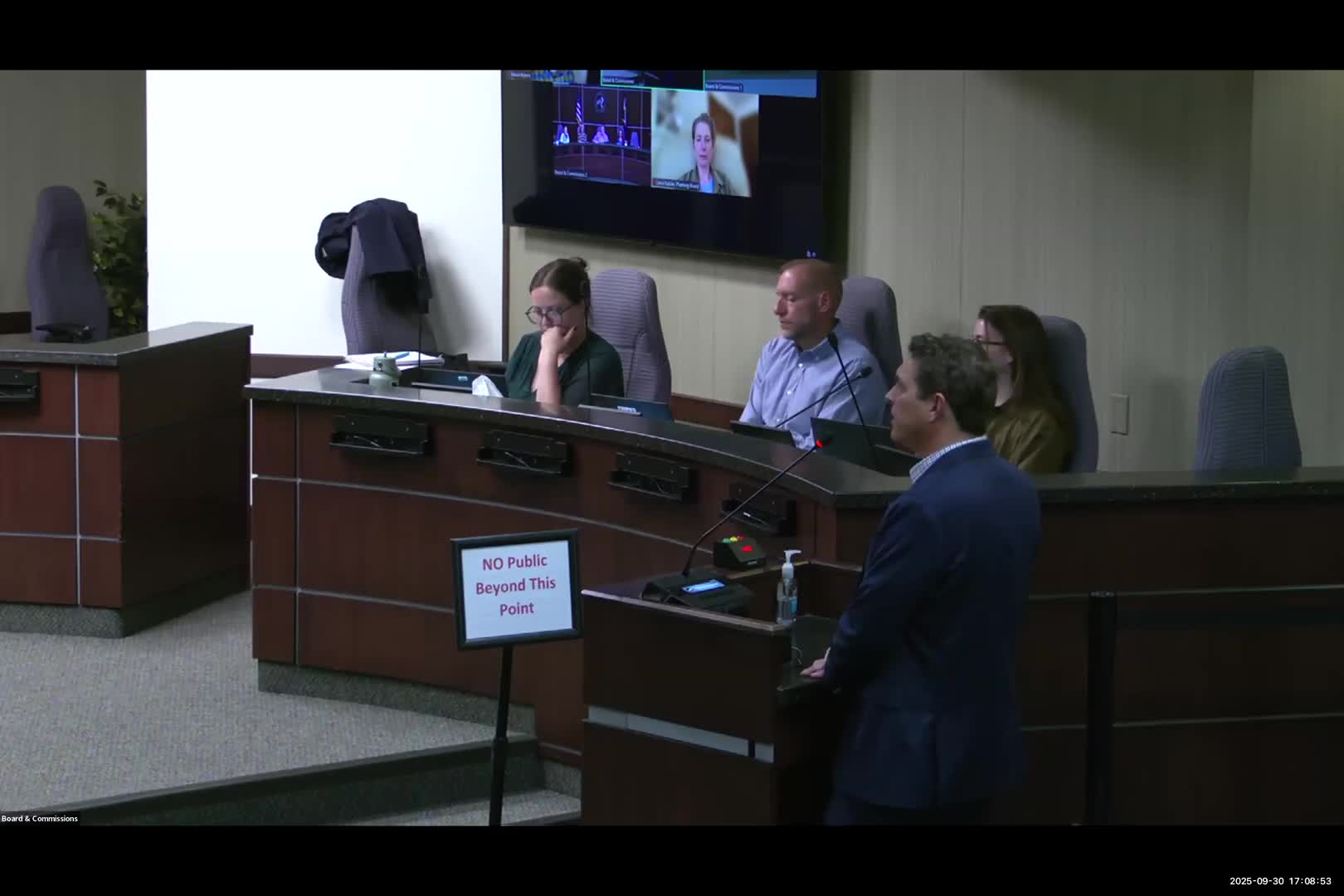Council Discusses Flood Mitigation and Site Plans for Williams Village Development
October 02, 2025 | Boulder, Boulder County, Colorado
This article was created by AI summarizing key points discussed. AI makes mistakes, so for full details and context, please refer to the video of the full meeting. Please report any errors so we can fix them. Report an error »

In the heart of Boulder City, under the bright lights of the planning board meeting, discussions unfolded around a pressing issue: flood mitigation. The meeting, held on October 2, 2025, brought together city officials and developers to address concerns about a proposed project located in a designated flood zone.
The conversation quickly turned to the flood easement, a critical element in ensuring safety and compliance with city regulations. One developer expressed concerns about the existing 50-foot flood easement, suggesting that it could hinder the project’s viability. “We’re just asking if there’s any way we could narrow it by 10 to 20 feet,” the developer stated, emphasizing the need for flexibility to maintain open spaces and effective street circulation.
City staff responded, highlighting the importance of the easement for upcoming flood mitigation projects, particularly the South Boulder Creek flood mitigation phase 2. “The 50-foot easement was found to be important,” a staff member noted, indicating that any adjustments would require careful consideration and modeling to ensure they wouldn’t compromise future flood control efforts.
The developer also shared insights into their flood mitigation strategy, revealing that nearly 40% of the site would consist of pervious surfaces, such as grass and gardens, designed to absorb rainwater and reduce flooding risks. They proposed a conveyance area along the property’s perimeter to redirect floodwaters away from the center of the site, aiming to alleviate flooding issues that have historically affected neighboring properties during heavy storms.
As the meeting progressed, questions arose about the historic value of existing structures on the site. City officials confirmed that no significant historic concerns had been identified, allowing the project to move forward without additional complications in that regard.
The discussions highlighted the delicate balance between development and environmental safety, with both city officials and developers expressing a willingness to collaborate. As the meeting concluded, the path forward remained uncertain, but the commitment to addressing flood risks and community safety was clear. The outcome of these discussions will shape not only the proposed project but also the broader landscape of flood management in Boulder City.
The conversation quickly turned to the flood easement, a critical element in ensuring safety and compliance with city regulations. One developer expressed concerns about the existing 50-foot flood easement, suggesting that it could hinder the project’s viability. “We’re just asking if there’s any way we could narrow it by 10 to 20 feet,” the developer stated, emphasizing the need for flexibility to maintain open spaces and effective street circulation.
City staff responded, highlighting the importance of the easement for upcoming flood mitigation projects, particularly the South Boulder Creek flood mitigation phase 2. “The 50-foot easement was found to be important,” a staff member noted, indicating that any adjustments would require careful consideration and modeling to ensure they wouldn’t compromise future flood control efforts.
The developer also shared insights into their flood mitigation strategy, revealing that nearly 40% of the site would consist of pervious surfaces, such as grass and gardens, designed to absorb rainwater and reduce flooding risks. They proposed a conveyance area along the property’s perimeter to redirect floodwaters away from the center of the site, aiming to alleviate flooding issues that have historically affected neighboring properties during heavy storms.
As the meeting progressed, questions arose about the historic value of existing structures on the site. City officials confirmed that no significant historic concerns had been identified, allowing the project to move forward without additional complications in that regard.
The discussions highlighted the delicate balance between development and environmental safety, with both city officials and developers expressing a willingness to collaborate. As the meeting concluded, the path forward remained uncertain, but the commitment to addressing flood risks and community safety was clear. The outcome of these discussions will shape not only the proposed project but also the broader landscape of flood management in Boulder City.
View full meeting
This article is based on a recent meeting—watch the full video and explore the complete transcript for deeper insights into the discussion.
View full meeting
